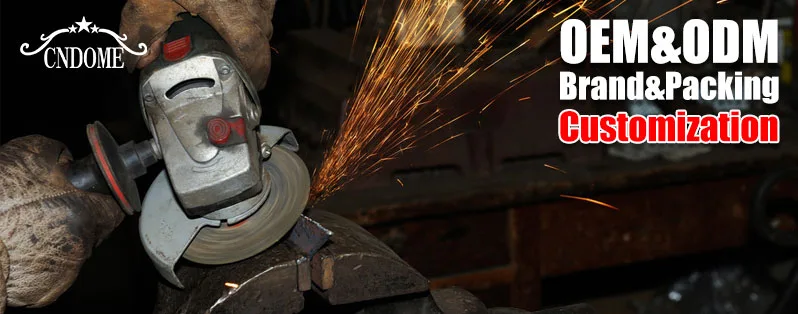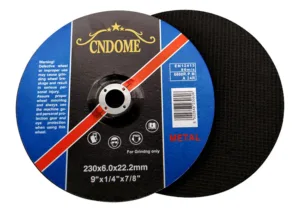When it comes to metalworking, the right grinding wheel is the unsung hero that can make or break your projects. The world of grinding wheels is vast and diverse, offering a plethora of options tailored to specific applications. In this blog, we dive deep into the art of selecting the perfect grinding wheel, equipping you with the knowledge to achieve outstanding results and efficiency in your work.
Understanding the Basics
Before delving into the selection process, it’s crucial to understand the basics. Grinding wheels are composed of abrasive grains, bonding agents, and sometimes fillers and additives. The combination of these elements determines the wheel’s performance and suitability for various tasks.
Material Matters
The type of material you’re grinding plays a pivotal role in wheel selection. Different materials require different levels of abrasiveness and hardness. For instance, a soft material demands a harder wheel, while a harder material necessitates a softer wheel. By aligning the wheel’s characteristics with the material’s properties, you ensure efficient and effective grinding.
Grit Size and Bond
Grit size refers to the size of the abrasive particles on the wheel’s surface. Coarser grits are ideal for rough grinding, while finer grits excel in precision work. Additionally, the bonding material holds the abrasive grains together. Different bonds offer varying levels of hardness and wear resistance, impacting the wheel’s durability and performance.
Wheel Shapes and Sizes
Grinding wheels come in a variety of shapes and sizes, each designed for specific tasks. From flat wheels for surface grinding to cylindrical wheels for intricate work, choosing the right shape ensures optimal contact with the material. Similarly, selecting the appropriate wheel diameter and thickness ensures proper balance and longevity.
Safety First
Safety should never be compromised in any work environment. Understanding the safety codes and markings on grinding wheels is vital. Look for ANSI safety codes to ensure compliance with industry standards. Always choose a wheel that is compatible with your grinder and intended application to prevent accidents and ensure a secure work environment.
Coolants and Lubricants
For tasks that generate heat, using coolants or lubricants becomes essential. These substances not only prevent overheating and material damage but also extend the life of your grinding wheel. Consider your work environment and the materials you’re grinding when deciding whether to incorporate coolants or lubricants.
Considering Cost and Longevity
While it’s tempting to opt for the cheapest option, keep in mind that quality and longevity matter. Investing in a high-quality grinding wheel may have a higher upfront cost but can save you money in the long run due to reduced replacements and enhanced performance.
Conclusion: The Art of Precision
Selecting the right grinding wheel is an art that requires knowledge, consideration, and a clear understanding of your needs. By aligning the wheel’s characteristics with the task at hand, you ensure optimal results, safety, and efficiency. Don’t settle for mediocre grinding; invest time in understanding the diverse world of grinding wheels and choose excellence for every project.
Ready to become a master of grinding wheel selection? Dive into our comprehensive guide and unlock the secrets to precision and efficiency in your metalworking endeavors. Your path to outstanding results begins with the right wheel choice.
Online Message
Minimum Order Quantity: 5,000 Pcs, 10 Pcs Free Samples.
Contact Us For More Information!
Tel/WhatsApp
+86 18796960868
[email protected]
Address


